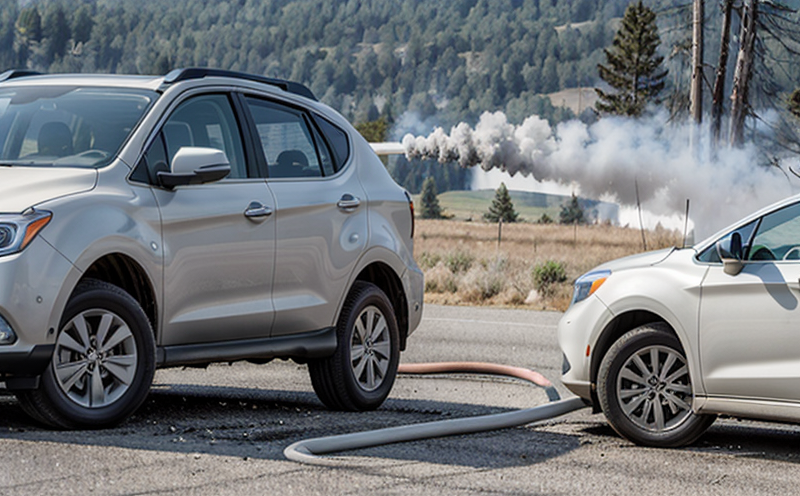Fire Smoke Toxicity Benchmarking
In today’s complex and ever-evolving industrial landscape, ensuring fire safety is paramount. Among the numerous factors that contribute to effective fire safety protocols, smoke density and toxic gas emissions play a critical role in safeguarding lives and properties during emergencies.
Fire Smoke Toxicity Benchmarking involves an extensive suite of testing methods aimed at quantifying the levels of smoke produced by materials under controlled combustion conditions. This service is crucial for manufacturers, researchers, and regulatory bodies to ensure that building materials, furniture, and other combustible items meet stringent safety standards.
The primary goal of this benchmarking process is not just compliance but also continuous improvement. By measuring the toxicity of smoke in real-world scenarios, we can identify materials with lower risks of causing harm during fires. This service helps clients stay ahead of regulatory changes and market demands by providing detailed insights into how their products compare against industry benchmarks.
Our team utilizes advanced analytical techniques to assess various parameters such as carbon monoxide (CO), hydrogen cyanide (HCN), and other toxic compounds present in the smoke. We also measure visibility reduction caused by particulate matter, which is critical for understanding the impact on human health and building environments.
Before conducting these tests, we carefully select appropriate specimens based on client specifications or industry standards. Specimen preparation includes ensuring that all samples are consistent with intended use conditions to provide accurate results. Our laboratory adheres strictly to international guidelines such as ISO 13635-2:2014 and ASTM E907-18, which specify the procedures for testing smoke density and toxic gas emissions.
The comprehensive nature of this service allows us to offer clients a detailed report outlining findings. This document serves not only as evidence of compliance but also provides valuable data that can be used in research and development efforts aimed at creating safer products.
By leveraging our expertise in fire safety testing, organizations can enhance their product offerings while meeting regulatory requirements more effectively. Our commitment to accuracy and reliability ensures that every test conducted adheres to the highest scientific standards available today.
Applied Standards
| Standard | Description |
|---|---|
| ISO 13635-2:2014 | This standard provides methods for determining the smoke density and toxic gas emissions from materials under controlled combustion conditions. It covers both visible light attenuation (smoke) and specific toxic gases. |
| ASTM E907-18 | American Society for Testing Materials standard that outlines procedures for measuring smoke obscuration produced by materials when exposed to an open flame. This helps in assessing the visibility reduction caused by particulate matter. |
Customer Impact and Satisfaction
- Increased confidence in product safety through rigorous testing.
- Possible reduction in liability risks associated with fire incidents involving client products.
- Enhanced reputation among stakeholders due to adherence to strict safety protocols.
Environmental and Sustainability Contributions
- Identification of less toxic materials for use in construction and furniture, leading to reduced environmental impact during fires.
- Promotion of sustainable practices within the industry by encouraging innovation towards safer alternatives.





